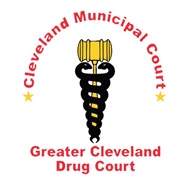Greater Cleveland Drug Court Advisory Board
Training Seminar and Drug Court Field Training Discussion
February 19, 2016
.png?sfvrsn=260791b9_6) Honorable Lauren C. Moore, Drug Court Judge
Honorable Lauren C. Moore, Drug Court Judge
Dr. Daryl D. Jackson, Program Coordinator
Jim Joyner, Advisory Board President
Teresa Egan, Advisory Board Secretary
Lynn McLaughlin-Murray, Advisory Board Treasurer
On Friday, February 19, 2016 the Greater Cleveland Drug Court Advisory Board held its first Advisory Board Training Seminar and Drug Court Field Training Discussion lead by representatives from the Cleveland Municipal Court, Supreme Court of Ohio and research and treatment professionals. This was a basic training in procedures, responsibilities and practices of the Drug Court Advisory Board with recommendations for new board members and updates for current members, Drug Court staff and treatment center administrators.
The Greater Cleveland Drug Court seeks to halt the revolving door of addiction and crime by linking addicted offenders to drug treatment and rigorous judicial monitoring. They bring together judges, prosecutors, defense attorneys, treatment providers, and court staff in a collaborative effort to address the offender’s underlying substance use disorder and enforce compliance with court orders. Drug courts also use a system of graduated incentives and sanctions to help substance abusers achieve and maintain a drug-free life.
Today there are over 3,000 drug courts in the United States. Thanks to the well-established and evidence based approach of the Greater Cleveland Drug Court of the Cleveland Municipal Court, which has proven to reduce substance abuse and recidivism within the greater Cleveland community, there are approximately 1,500 Greater Cleveland Drug Court graduates. Dr. Margaret Baughman, Senior Research Associate at the Begun Center at Case Western Reserve University, presented Year One Research Findings of Opiate Users in Drug Court. Dr. Baughman reported that Drug Court participants reported less alcohol, marijuana, and heroin use over time. They also were re-arrested less often, spent fewer nights in jail, and had increased rates of employment, stable housing, and attendance at self-help meetings such as AA and NA.